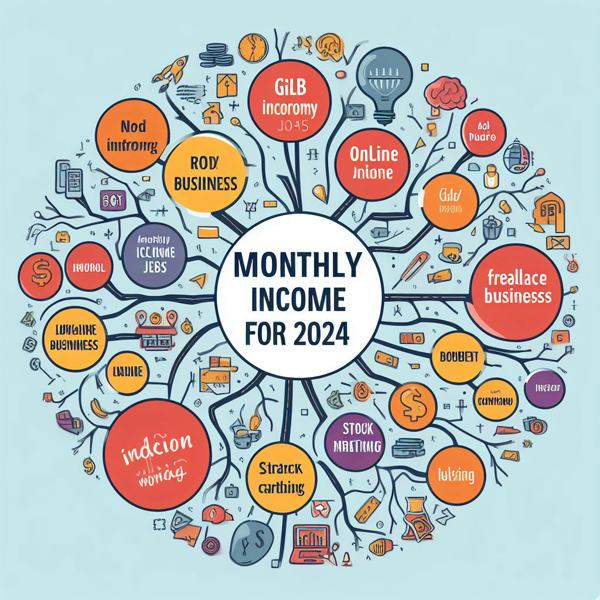
- September 27, 2023
- Personal Finance Advisor
- 0
Active and passive income are two fundamental concepts in personal finance and wealth building. They represent two different ways of earning money, each with its own characteristics, benefits, and drawbacks. Active income refers to the income that you earn by actively working.
This could be your salary from a job, hourly wages, or income from a business that you actively manage. It requires your direct involvement and time. On the other hand, passive income is the money you earn without having to actively work for it on a regular basis.
This could come from investments, real estate rentals, royalties, or businesses that you own but do not actively manage. The allure of passive income lies in the potential to earn money while you sleep, freeing up your time for other pursuits.
However, it’s important to note that passive income often requires substantial upfront investment or effort. Understanding these two types of income is the first step towards creating a balanced and sustainable financial plan.


Understanding Active Income: Definition and Examples
Active income refers to the earnings that an individual receives from their direct involvement in a job or business. It is the income that one actively works for, hence the name. This type of income is usually predictable as it is often tied to a specific amount of work done or hours worked. Examples of active income include salaries from employment, hourly wages, tips, and profits from a business you actively manage.
For instance, if you are employed as a teacher, the salary you receive at the end of the month is your active income. Similarly, if you own a bakery and are involved in its day-to-day operations, the profits generated from the bakery constitute your active income.
Active income often requires a significant time commitment, as your earnings are directly linked to your active participation and effort. It is the most common form of income and is what most people rely on to meet their daily expenses. However, it is also subject to higher tax rates compared to passive income, which is one of its major drawbacks. Understanding active income is crucial in financial planning as it forms the basis of most people’s income streams.


Understanding Passive Income: Definition and Examples
Passive income is often described as money earned with minimal to no effort on the part of the individual receiving it. Unlike active income, which requires you to trade your time for money, passive income streams can generate earnings around the clock, even when you’re not actively working.
-
- One common example of passive income is rental income from real estate properties. If you own a property and rent it out, the rent you receive from your tenants is considered passive income. You may have to put in some initial effort to purchase and prepare the property, but once it’s rented out, you can earn money from it without putting in significant daily work.
-
- Another popular form of passive income is earnings from investments, such as dividends from stocks or interest from bonds. These investments may require an upfront financial commitment and some knowledge of the financial markets, but they can generate income without ongoing effort.
-
- Online businesses can also be a source of passive income. For instance, if you create a successful blog or YouTube channel, you can earn advertising revenue. Similarly, if you write a book or develop a software program, you can earn royalties every time someone purchases your product.
The Pros and Cons of Active Income
Active income refers to the earnings that an individual receives from their direct involvement in a job or business. This includes salaries, wages, tips, and profits from a business you actively manage.
One of the main advantages of active income is the immediate financial reward. You work a certain number of hours, and you get paid for those hours. It’s a straightforward way to earn money and can provide a stable, predictable income. Active income also often comes with additional benefits such as health insurance, retirement plans, and paid time off.
However, active income also has its drawbacks. It requires a significant time commitment, often leaving little room for leisure activities or other pursuits. It’s also directly tied to your ability to work. If you’re unable to work due to illness or injury, your active income may be jeopardized. Additionally, active income is often subject to higher tax rates than passive income.
While active income can provide stability and immediate financial rewards, it also requires a significant time investment and can be risky if one’s ability to work is compromised. It’s important to weigh these pros and cons when considering your overall income strategy.
The Pros and Cons of Passive Income
Passive income is often hailed as the key to financial freedom, but it’s important to understand both its advantages and disadvantages.
One of the main benefits of passive income is the potential for earning money with minimal ongoing effort. Once the initial work or investment is made, passive income sources can generate revenue continuously. This can provide a sense of financial security and free up time for other pursuits. Examples include rental income from properties, earnings from a blog or YouTube channel, dividends from investments, or royalties from a book.
However, passive income also has its drawbacks. The initial setup often requires a significant investment of time, money, or both. For instance, purchasing a rental property requires a large upfront cost and ongoing maintenance. Similarly, writing a book or setting up a blog requires a substantial time investment before any income is generated.
Moreover, passive income is not entirely ‘passive’. It often requires monitoring and occasional adjustments. For example, investment portfolios need to be rebalanced, and rental properties may need repairs.
Comparing Active vs. Passive Income: Key Differences
Active and passive income are two distinct types of earnings that play a crucial role in your financial health. The key difference lies in the level of involvement and effort required.
Active income, as the name suggests, requires active participation. This typically includes wages from a job, tips, or income from a business you actively manage. It demands your time, skills, and energy on a regular basis.
On the other hand, passive income is money earned with minimal to no daily effort. It’s often associated with investments, such as rental properties, dividends from stocks, or earnings from a blog or book that continues to generate revenue long after the work is done. The allure of passive income lies in the potential to earn money while you sleep, freeing up time for other pursuits.
However, it’s important to note that passive income often requires substantial upfront effort or investment. For instance, writing a book or buying and managing rental properties can demand significant initial work and capital. Therefore, while passive income may seem more appealing, it’s not without its challenges and risks. Balancing both types of income can provide a more diversified and stable financial portfolio.
Strategies for Transitioning from Active to Passive Income
Transitioning from active to passive income is a strategic move that requires careful planning and execution. The first step is to understand the concept of passive income thoroughly. Unlike active income, where you trade your time for money, passive income allows you to earn money even when you’re not actively working.
-
- One of the most common strategies for transitioning is to start by saving a portion of your active income to invest in passive income sources. These could be in the form of real estate, stocks, bonds, or even starting a side business that requires minimal supervision.
-
- Another strategy is to leverage your skills or knowledge into a passive income stream. For instance, if you’re a skilled writer, you could write a book and earn royalties. If you’re knowledgeable in a particular field, you could create an online course or a blog that generates ad revenue.
Remember, the transition doesn’t happen overnight. It requires patience, persistence, and a willingness to take calculated risks. It’s also crucial to continuously educate yourself about different passive income sources and investment strategies.
Ultimately, the goal is to create a sustainable income stream that can support your lifestyle without the need for constant active work. This way, you can achieve financial freedom and have more control over your time and life.
Balancing Active vs. Passive Income for Financial Stability
Balancing active and passive income is a crucial strategy for achieving financial stability. Active income, which is earned through regular employment or business, provides a steady stream of funds for daily expenses. However, it often requires a significant amount of time and effort, and the income stops when you stop working.
On the other hand, passive income, generated from investments, rental properties, or online businesses, can provide a continuous flow of income with minimal effort once set up. It can act as a safety net, supplementing your active income and providing financial security in case of job loss or during retirement.
However, transitioning from active to passive income should be done carefully. It’s important to maintain a stable active income while gradually building your passive income sources. This might involve investing a portion of your active income into stocks, bonds, or real estate, or setting up an online business in your spare time.
Remember, passive income sources also come with their own risks and challenges, such as market volatility or business failures. Therefore, diversification is key. By balancing active and passive income, you can create multiple income streams, reduce financial risks, and work towards long-term financial stability and growth.
Case Studies: Success Stories in Earning Passive Income
Passive income has been a game-changer for many individuals, providing them with financial stability and freedom. Let’s explore a few success stories.
-
- Firstly, we have the story of a blogger named Sarah. She started a blog about parenting, initially as a hobby. However, as her audience grew, she began to monetize her blog through affiliate marketing and sponsored posts. Today, her blog generates a substantial passive income, allowing her to work less and spend more time with her family.
-
- Next, consider the case of John, a real estate investor. John started by purchasing a single rental property. Over time, he expanded his portfolio and now owns multiple properties that generate a steady stream of rental income. This passive income source has not only provided him with financial security but also the freedom to pursue other interests.
-
- Lastly, there’s the story of Mike, an app developer. Mike created a fitness app, which he sells on various platforms. The initial effort was significant, but now the app generates income for him every time it’s downloaded, with little to no ongoing effort on his part.
These stories illustrate the potential of passive income to create financial freedom and stability.
Conclusion: Choosing the Right Income Strategy for You
Choosing the right income strategy is a crucial step towards achieving financial freedom and stability. It’s not about choosing between active and passive income, but rather understanding how to effectively balance the two. Active income, while more labor-intensive, provides immediate financial rewards and can be more predictable. On the other hand, passive income, though it requires upfront investment and time, can offer long-term financial security and the potential for exponential growth.
The key is to start with active income, using your skills and labor to earn a steady income. Then, gradually transition towards creating passive income streams. This could be through investing in stocks, real estate, or creating a business that requires minimal oversight. Remember, the goal of passive income is not to replace active income entirely, but to supplement it and provide a safety net.
Everyone’s financial situation and goals are unique, so there’s no one-size-fits-all strategy. It’s important to assess your own financial goals, risk tolerance, and time commitment before deciding on the right balance of active and passive income for you. With careful planning and strategic decision-making, you can leverage both types of income to build wealth and achieve financial freedom.














